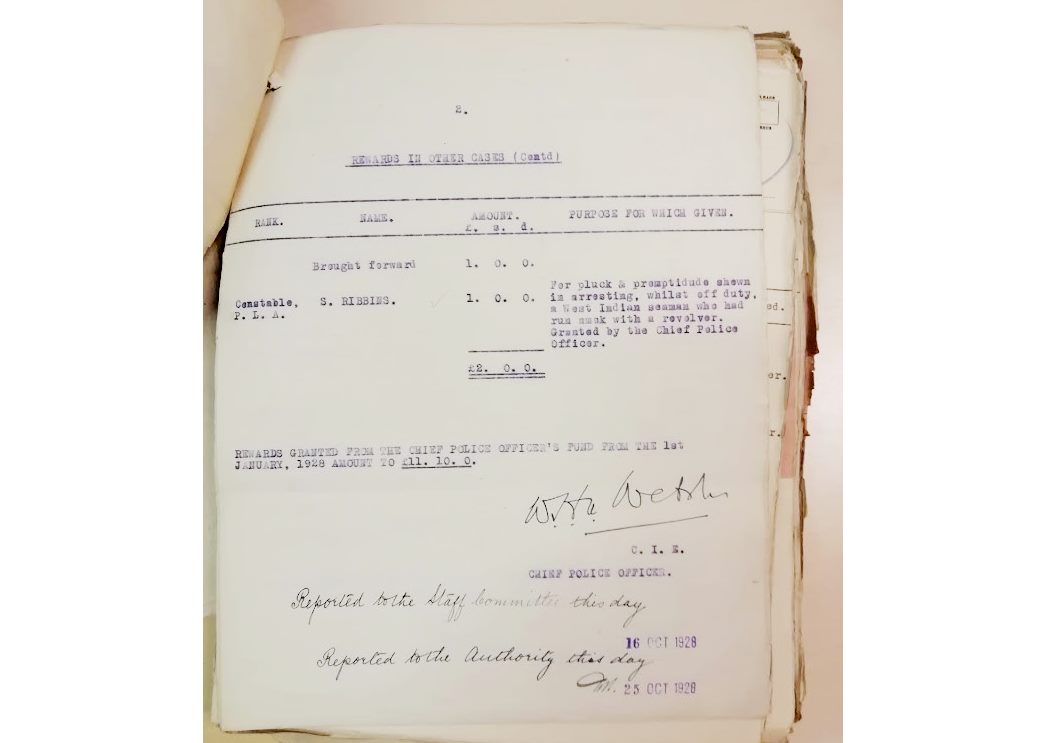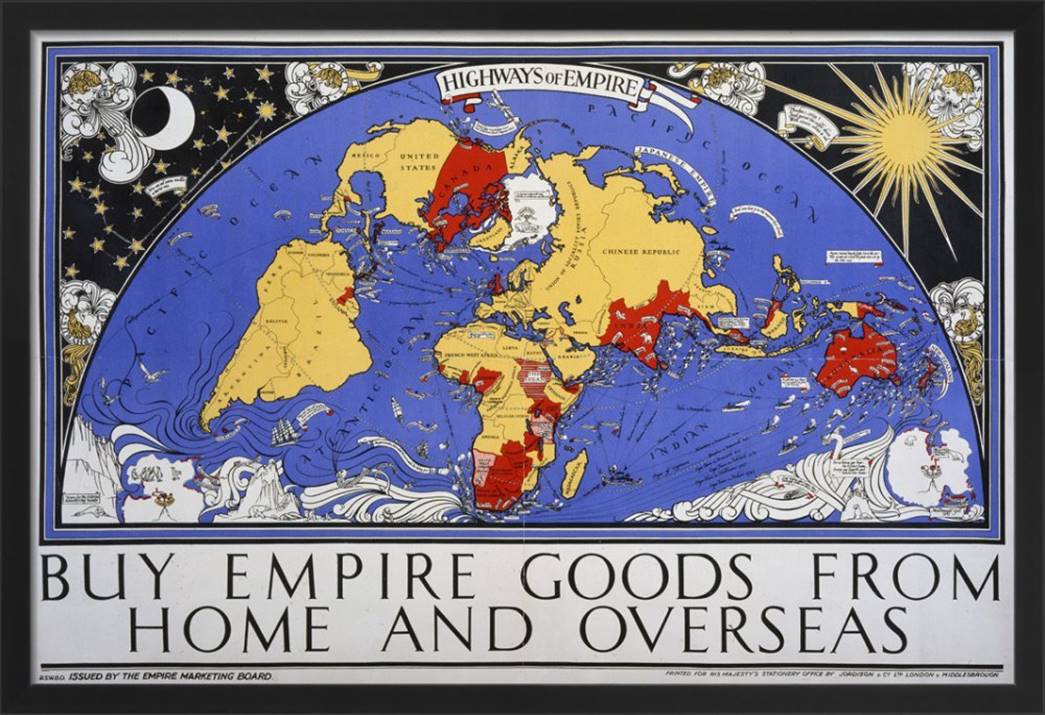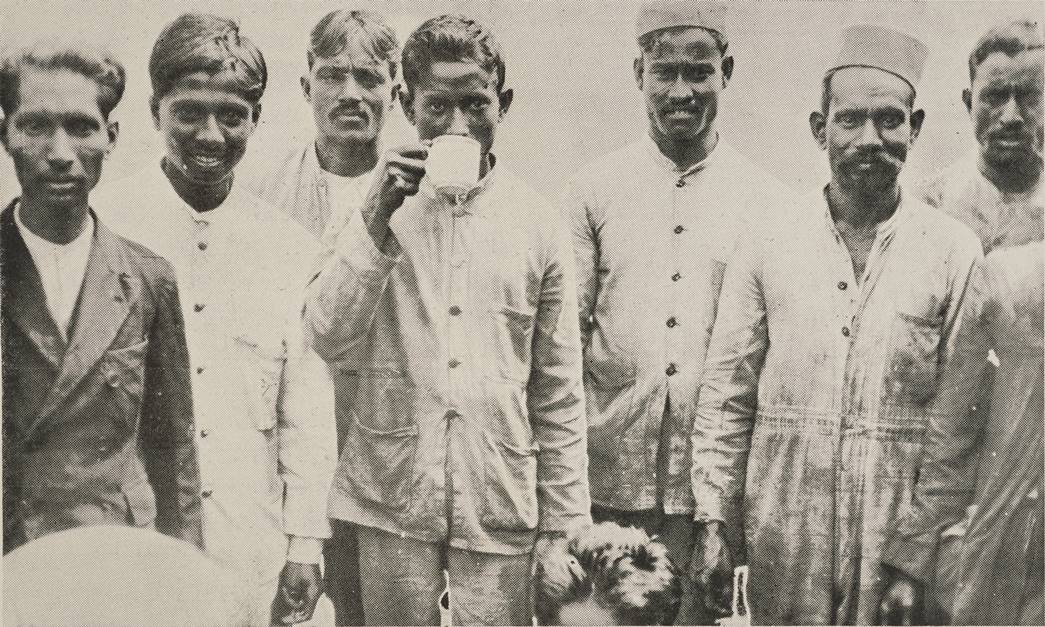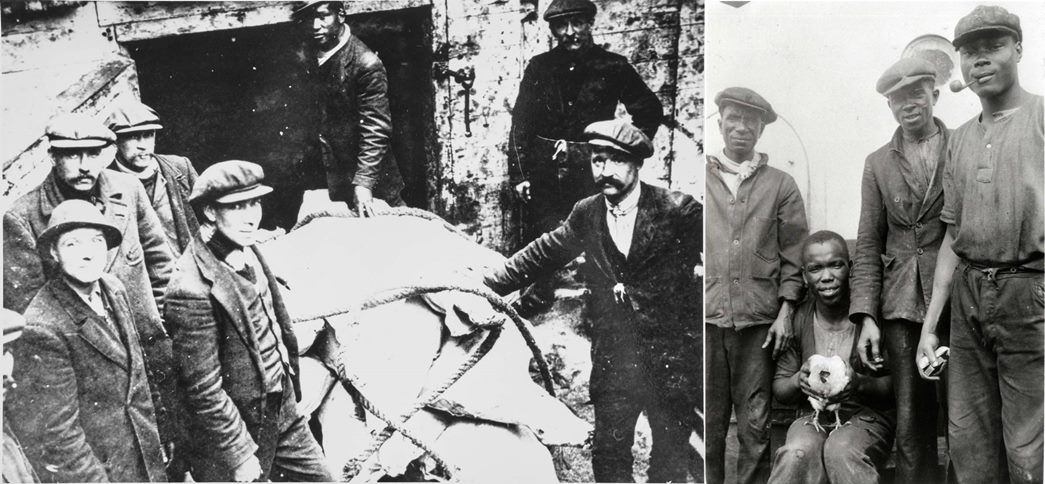Maps, photographs and letters in the Port of London Authority archives gives us a porthole view into the lives of the London’s Dockers community from the early 20th century. These documents give fleeting traces of African and Asian people around London’s docks, whose presence could easily have been forgotten if not for passing references. Here’s how we’re missing a crucial piece of the life in London’s docklands.
On 16 October 1928, W.H.A. Webster, Chief Police Officer of the Port of London Authority Police Force, granted Constable S. Ribbins a reward of £1 for his: “pluck and fortitude shewn in arresting, whilst off duty, A West Indian seaman who had run amok with a revolver.”
This short entry praising Constable Ribbins’ courage in the line of duty on an unnamed London dock worker is both intriguing and tantalising for what it does not tell us. First, it demonstrates a Caribbean presence on the docks in the 1920s. But who was this West Indian seaman, and what were the circumstances that caused him to ‘run amok’ with a revolver? Was he imprisoned, or was he later allowed to return to his ship?
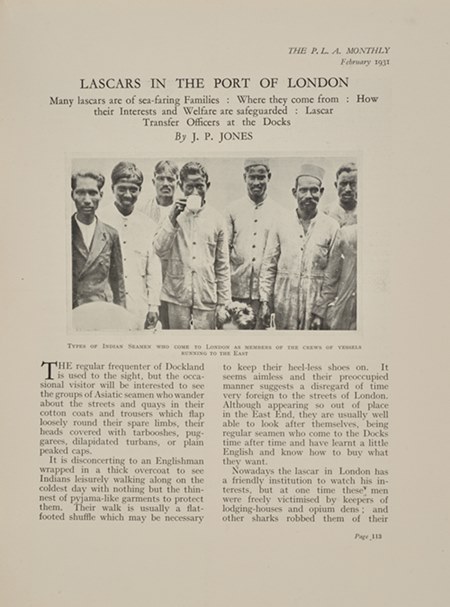
A rare article on lascars published in the PLA Monthly in February 1931. (ID no.: PLA/PLA/PM/1/5/1/64)
This seaman’s tale, like those of the thousands of African, Caribbean and Asian sailors, dock workers, stevedores and others come to the historical researcher as entries in records; often an interesting observation made by the person making the entry, but no more than that. The lack of any personal testimonies, written from the perspective of these individuals’ means that a more nuanced or complete narrative about the history of London as a port city and the significance of those colonial links to them, remain unknown.
London’s dockers
London’s docks have long been the hub for goods arriving from the distant reaches of Britain’s empire. Also drawn to the empire’s centre were workers from the African continent, China, the Caribbean and India, themselves imperial subjects. Like the white British workers living around the dock areas, these workers also helped to keep the docks running, and as sailors on merchant vessels, they were essential in making sure goods arrived safely into Britain’s ports. Their work saw them regularly passing through, their difference noted and documented in early photographs and official records; those who made their homes in the various port cities established communities of colour leaving an indelible cultural and economic impact on London and other port cities.
Highways of Empire
In 1927, the Empire Commissions Board displayed a marketing poster entitled Highways of Empire on billboards throughout the country to promote trade between the imperial territories. It presented all trade routes leading to Britain — placed at the centre of the poster! Thus, providing an idealised vision of the empire and its dominions, a source of pride, nationalism and a celebration of modernity. Voyages that had taken weeks or months now took days as flight routes were established and ships were fitted with powerful engines that sped on the oceans in vastly reduced times. Highways of Empire, as the text accompanying the map reads, “shows the world as it would appear from an aeroplane so high above London that the pilot saw continents stretched out beneath him, [giving] a vivid idea of how the British Empire is scattered in relation to the home country.”
This magnificent imagined aerial view of the territories, whose resources are brought to the empire’s centre, is notable for telling only part of the imperial story. In its review of the poster in 1927, the Manchester Guardian noted that it was “imperialism without the tears”, indicating that much was left unsaid about the nature of the imperial project, with more emphasis on the countries and peoples as producers of commodities, rather than attention to individual narratives of what it may have been like to harvest palm oil, or peanuts, and products solely cultivated for British markets.
Global connections, local lives
Within the archives held at the Museum of London Docklands, there are many written references to, and photographic evidence of lascars (a general term to refer to all Indian seafarers), West Indian, Chinese and West African merchant fleet crewmen — painting a vivid picture of a busy, vibrant port, with a diverse workforce. Port of London Authority personnel records reveal here and there, an African or Asian name of a person working in the canteen, as a dry dock labourer, or machinery attendant. A Black dock worker is photographed slinging quarters of beef with his workmates at the Royal Docks in 1919. African sailors on the cargo ship SS Barrabool at the East India Dock in 1935 pose on deck with grins, arriving from an unknown destination, possibly Australia on P&O’s Branch Line. And in 1908, Indian seaman are captured on deck of a vessel, dressed in dhotis, or light cotton uniforms.
Fleeting presence
Unfortunately, the images of Black and South Asian seafarers in the archives are not rooted in individual experiences, so their presence is fleeting, not permanent. There is no additional information available, with a lack of descriptions or texts written by Black and Asian seamen and dock workers themselves adding to the difficulty of tracing their histories. These men and their stories are and will remain anonymous. They were here and were not here. Consequently, it has not been possible to get a full sense of the scale and scope of the complexities of the narrative around the docks and a balanced exploration of the ‘tears of empire’ remains elusive. Their lived experiences in this period would have been an essential tool in battling historical erasure.
Legacies of empire
Returning to the West Indian seaman apprehended by Constable Ribbins back in 1928. More documentation about the seaman could have given an insight into how empire informed his life choices.
What is the impact of not having stories included from all British spaces?
What impact does it have to be only able to tell half the story?
The Museum of London Docklands invites visitors to ask these questions and to immerse themselves into the history of one of Britain’s oldest ports, and the way it connected London to the rest of the world.
Dr Angelina Osborne is an independent historian and heritage consultant. Her specialisms are the public history of slavery, memory, and citizenship and the African and Caribbean presence in Britain. Osborne received an MBE in the 2022 New Year’s Honours for her services to heritage.








